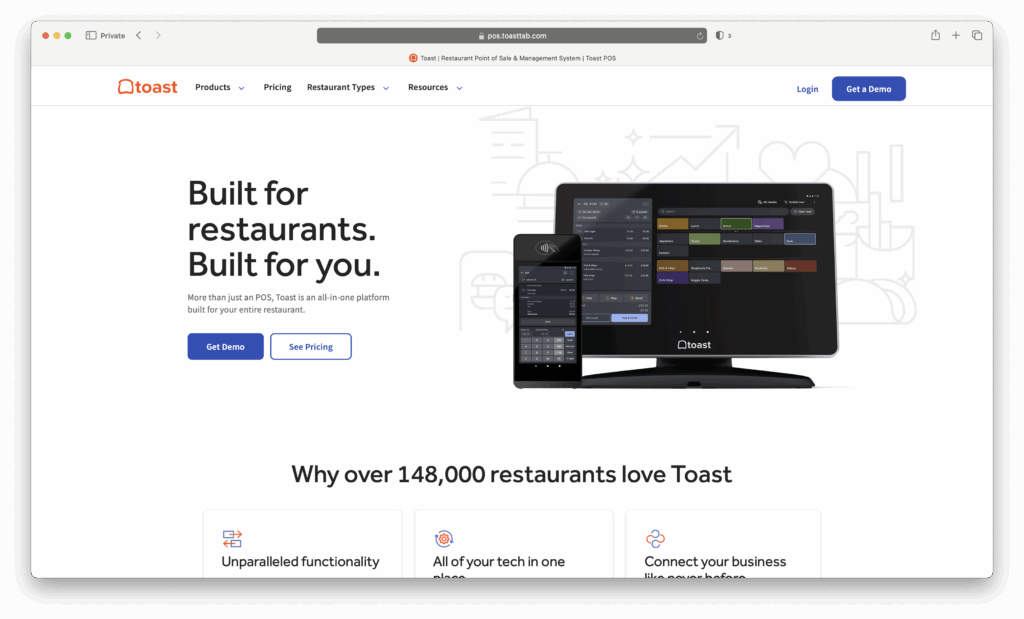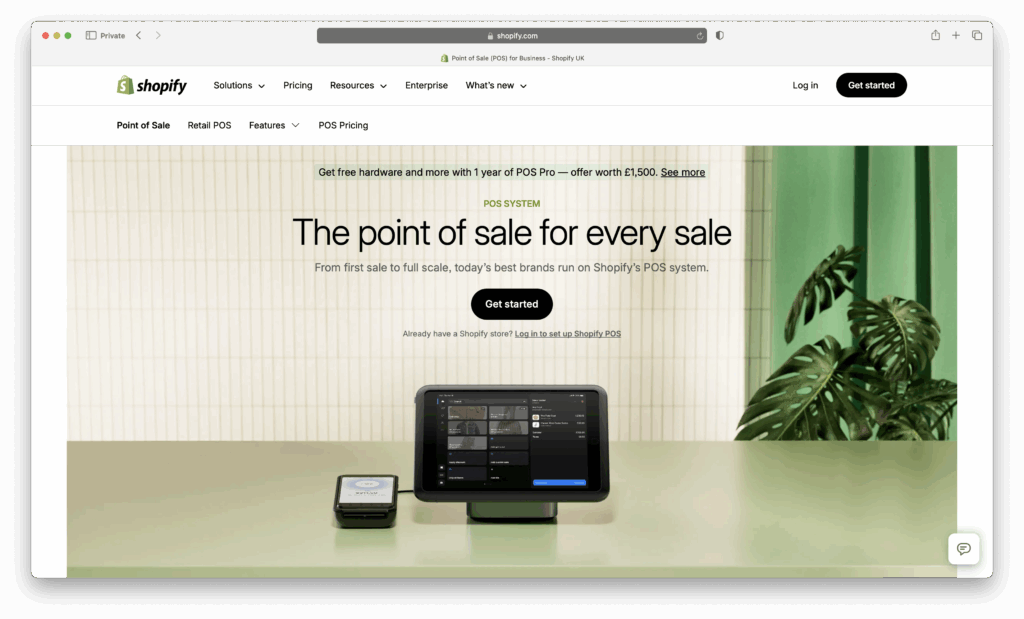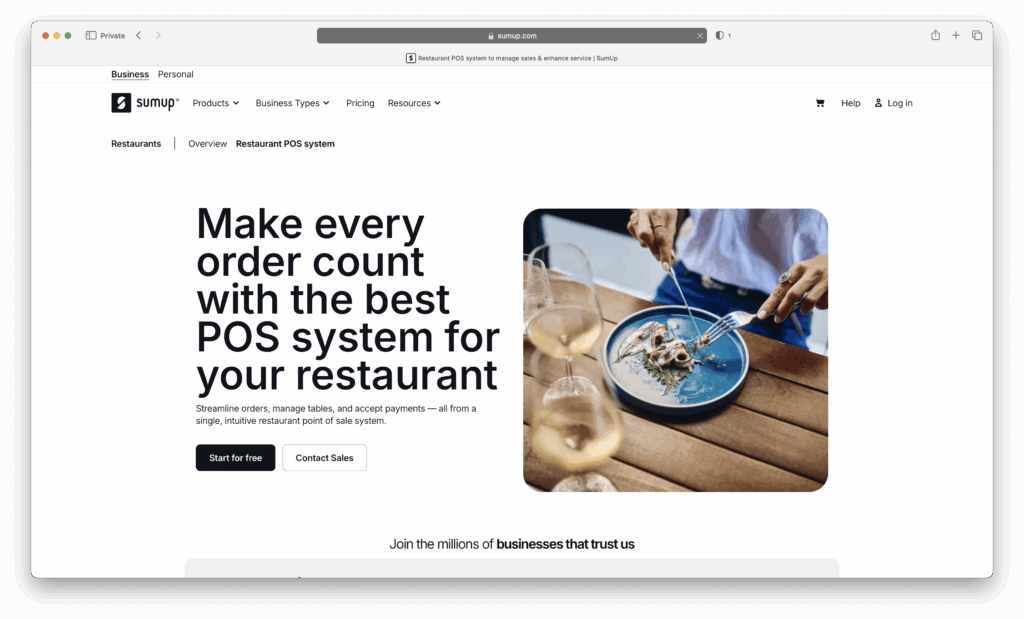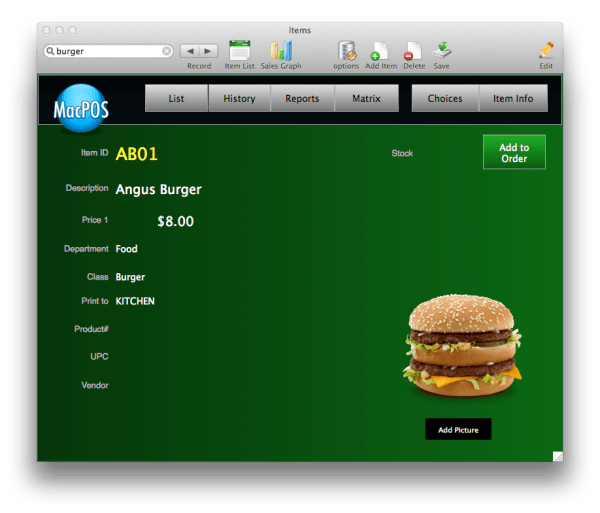Running a bar or restaurant? Looking to elevate your customer experience and staff efficiency with a polished POS system but want to use your trusty Mac? You’re in luck.
While Mac-specific POS software remains somewhat rare, the landscape has widened significantly. Whether you’re team Mac-only or hybrid with iPads, modern POS tools now offer integrated system, stylish Apple-friendly design, and robust functionality.
If you’re still on the fence about going full Apple – trust us, it’s a smart move. Sleek hardware, rock-solid security, and intuitive interface aren’t just pleasant – they pay off in faster service, less training time for staff, and cleaner analytics.
Pair your Mac with iPads, and you get intuitive table-side ordering, real-time kitchen feeds, and a professional touch that guests notice.
Table of Contents
- What to Consider Before Choosing
- 1. Square for Restaurants – Best for Getting Started Easily
- 2. Toast – Best for Full-Service Restaurants with Complex Needs
- 3. TouchBistro – Best iPad-First Experience
- 4. Lightspeed Restaurant (formerly POSIOS) – Best for Multi-Location Operations
- 5. Cake POS – Best For Quick Service Restaurants
- 6. Lavu POS – Best for Customization
- 7. Shopify Restaurant POS – Best for Restaurants with Retail
- 8. SpotOn Restaurant POS – Best for Customizable Solutions
- 9. SumUp POS – Best for Small Restaurants & Cafés
- 10. Revel Systems – Best for High-End or Venue-Based Use
- 11. Waiterio POS System – Best Basic Free POS
- 12. MacPOS PRO – Best One Time Purchase POS
- Mac Restaurant POS Comparison Table
- Trends in Restaurant POS Software in 2025
- FAQ
What to Consider Before Choosing
Budget definitely matters but before you decide, here are essential criteria to weigh:
- Pricing Policy : Subscription-based vs. one-off; watch for hidden transaction or hardware fees.
- Support: Is support included, or extra fee?
- Loyalty & marketing tools: Built-in features can boost repeat business.
- Payment processing: Integrated or open middleware – what suits your vendor, bank, or working processes?
- Update & training costs: Is the platform truly plug-and-play, or has hidden onboarding fees?
- Free trial? Some vendors offer demos, even if not explicitly stated.
With this in mind, here we look at the best POS systems for Mac based restaurants in 2025.
1. Square for Restaurants – Best for Getting Started Easily

Ideal for cafés, food trucks, and small eateries, Square remains a standout due to its free base plan (transaction fees apply) and Apple-ready mobile app. Stylish iPad hardware, powerful inventory tools, and slick analytics make it a practical and scalable choice for 2025 for users on all types of Apple device, including Macs.
2. Toast – Best for Full-Service Restaurants with Complex Needs

Android-based under the hood, Toast excels with built-in kitchen display systems, delivery integration, and first-class analytics which are ideal for mid- to large-scale operations. If your restaurant still relies on Macs for back-end work, Toast offers next-level process control.
3. TouchBistro – Best iPad-First Experience

If you’re building a slick, Apple-centric front-of-house setup, TouchBistro may be for you. iPad-native, with elegant table layouts, bill splitting, and powerful inventory tools, it gives your venue a modern, efficient vibe with full compatibility with Macs.
4. Lightspeed Restaurant (formerly POSIOS) – Best for Multi-Location Operations

Headquartered in Montreal, Lightspeed is a giant in the restaurant POS industry and provides a polished, scalable platform with cross-location sync, real-time analytics, and superior customization – perfect for centralized control across restaurants. Lightspeed is one of the biggest players in the industry and now owns several other restaurant POS brands including Vend and UpServe.
5. Cake POS – Best For Quick Service Restaurants

Cake POS, now backed by Sysco’s Mad Mobile, is a cloud-native POS crafted with full-service restaurants, cafés, and bars in mind. Its intuitive interface, combined with tools for tableside ordering, guest management, and loyalty programs, makes it a powerful all-in-one solution.
6. Lavu POS – Best for Customization

Lavu POS is highly flexible, making it a strong choice for restaurants that need customized ways of working and detailed control over menu management. It’s especially popular with independent restaurants, cafés, and bars that want to shape the POS system around the way they work.
The platform supports tableside ordering, inventory management, online ordering, and third-party delivery integrations, while also offering multi-location support for growing businesses. Lavu also provides built-in payment processing but works with several external providers for more choice.
7. Shopify Restaurant POS – Best for Restaurants with Retail

Shopify POS is a great fit for restaurants, cafés, or bars that also sell retail items like packaged goods, merch, or takeaway products. It combines food-service features such as tableside ordering and menu management with Shopify’s powerful eCommerce tools, so you can manage in-person and online sales from one system.
It’s best for restaurants that want a unified platform for both dining and retail, especially if you already use Shopify for your online store.
8. SpotOn Restaurant POS – Best for Customizable Solutions

SpotOn is a flexible POS system built for restaurants that need customized workflows, from fine dining to fast casual. It offers tableside ordering, real-time menu updates, and strong integration with payment processing and customer loyalty programs.
It’s best for restaurants that want a customizable, scalable POS with powerful reporting and marketing features.
9. SumUp POS – Best for Small Restaurants & Cafés

SumUp POS is an affordable, easy-to-use system ideal for smaller restaurants, cafés, and food trucks. It combines POS features with integrated payment processing, inventory tracking, and basic reporting. It’s best for businesses that want a low-cost, straightforward POS without complex setup or long contracts.
10. Revel Systems – Best for High-End or Venue-Based Use

Built around iPads with heavy-duty backend infrastructure, Revel (now owned by Shift4) fits gourmet dining, stadiums, and event venues. It features strong integration with payments, loyalty, and online sales partners.
11. Waiterio POS System – Best Basic Free POS

Waiterio is a fast, user-friendly POS solution designed to streamline restaurant operations. Ideal for establishments like cafes, pizzerias, and bars, it enables staff to take orders swiftly and send them directly to the kitchen. Features include customizable menus, staff collaboration, thermal printer support, and sales reporting. With a free version available, it’s a cost-effective choice for small to medium-sized venues.
12. MacPOS PRO – Best One Time Purchase POS

MacPOS Pro is a functional but dated POS software tailored for Mac users, offering both subscription and lifetime license options. It supports multiple Macs over a local network, making it suitable for growing businesses. Key features encompass advanced inventory management, customer tracking, cloud-based reporting, barcode label printing, and integrated credit card processing. With a 30-day free trial, it’s an excellent choice for businesses seeking scalability and comprehensive POS functionality.
Mac Restaurant POS Comparison Table
To help see how these systems compare against each other, here’s a side-by-side comparison:
| POS System | Best For | Deployment | Pricing Model | Key Features | Free Trial |
|---|---|---|---|---|---|
| Square for Restaurants | Best all-round POS for small to mid-sized restaurants | Cloud (Mac/iPad) | Subscription + processing fees | Tableside ordering, inventory, payroll, built-in payments, delivery integrations | Yes |
| Toast POS | Best for larger restaurants with Android-first setup | Cloud (Android tablets, limited Mac/iOS support via web) | Subscription + hardware | Full-service features, loyalty, online ordering, advanced analytics | No |
| TouchBistro | Best for iPad-based restaurants | Hybrid (iPad + local server) | Subscription | Menu management, tableside ordering, staff scheduling, loyalty, reservations | Yes |
| Lightspeed Restaurant (K-Series) | Best for multi-location restaurants and cafés | Cloud (iPad/Mac web) | Subscription | Advanced reporting, inventory, staff management, loyalty, multi-location tools | Yes |
| Cake POS (by Mad Mobile) | Best for guest-focused experiences | Cloud (iPad/Mac web) | Subscription | Tableside ordering, online ordering, loyalty programs, strong analytics | No |
| Lavu POS | Best for customization and quick-service dining | Cloud (iPad) | Subscription | Menu customization, payment flexibility, loyalty, 24/7 support | Yes |
| Shopify Restaurant POS | Best for restaurants with strong retail/online presence | Cloud (iPad/Mac web) | Subscription + processing | Unified eCommerce + restaurant POS, inventory sync, payments | Yes |
| SpotOn Restaurant POS | Best for restaurants wanting bundled marketing & loyalty | Cloud (iPad/Mac web) | Subscription | Built-in marketing, loyalty, reservations, payments, reporting | No |
| SumUp POS | Best for small cafés and food trucks | Cloud (iPad) | Low-cost subscription + card reader | Simple setup, integrated payments, mobile-friendly | Yes |
| Revel Systems (Shift4) | Best for enterprise restaurants | Hybrid (iPad + server) | Subscription + hardware | Complex inventory, CRM, delivery, loyalty, advanced analytics | No |
| Waiterio POS | Best for budget-friendly restaurants | Cloud (Mac/iPad) | Low-cost subscription | Menu design, order sending to kitchen, simple reporting | Yes |
| MacPOS Pro | Best for traditional Mac-based POS setups | On-premise (Mac + iOS) | One-time license (Pro €499) | Custom inventory, sales reports, barcode printing, export to Excel | Yes |
Trends in Restaurant POS Software in 2025
Modern POS systems have evolved and are no longer just check-out tools – they’re the central hub powering every layer of restaurant operations: payments, kitchen orders, customer engagement, inventory, marketing, and automation.
For restaurant owners, the right software can lead to leaner operations, more personalized guest experiences, and staying more competitive.
Here’s a few ways that restaurant POS software is changing in 2025.
1. Cloud-Based POS Systems
Cloud-native POS systems are now the industry norm, with very few designed for one particular platform. They deliver real-time updates on sales, inventory, and customer behavior and are accessible anywhere, on any device.
2. Cross Channel Integration
Today’s POS systems don’t just take orders – they unify delivery platforms, loyalty programs, reservations, accounting, and online ordering into one smooth interface. This integration reduces errors and centralizes operations in a way that was previously impossible.
3. AI-Driven Analytics & Predictive Operations
AI is revolutionizing how restaurants anticipate demand, manage inventory, and optimize staffing. By analyzing sales trends, weather data, and holidays, restaurants can now forecast demand more accurately which helps minimize waste and boosts efficiency.
4. Voice Ordering & Virtual Assistants
Voice tech is steadily making its way into POS systems. From virtual assistants taking orders to front-of-house operations assisted with voice commands, these also help improve efficiency in busy restaurants.
5. Self-Service and Smart Kiosks
Self-order kiosks and QR-code menus offering digital ordering and payment are increasingly popular providing benefits like reduced lines, upselling, and order accuracy.
6. Contactless & Mobile Payments Everywhere
Contactless payments – via Apple Pay, Google Wallet, or QR scans – have become expected by customers. Now, SoftPOS (software-based mobile POS) is gaining traction, turning phones and tablets into secure payment terminals with no extra hardware.
7. Smart Kitchen Displays & Automation
Kitchen Display Systems (KDS) are replacing paper tickets with instant order feeds and predictive analytics to smooth out operations and reduce waste.
8. Hyper-Personalization Through AI
AI-powered menus, loyalty prompts, and even dynamic pricing based on demand or customer behavior are also emerging. Some restaurants now use AI to recommend items or adjust prices in real-time, giving diners more tailored experiences.
9. Sustainable, Data-Driven Inventory & Operations
The more advanced POS systems now offer real-time inventory tracking, automated reordering, and waste reduction through data analytics.
10. Integrated Reservations & Virtual Waitlists
Reservation systems now do more with virtual waitlists with text alerts, guest data capture, and marketing insights to make coordination smoother and improve guest experiences.
FAQ
1. What makes a POS system suitable for Macs in 2025?
A Mac-friendly POS can be a native macOS app or browser-based platform that works seamlessly with Safari or Chrome on your Mac and integrates smoothly with iPads. Look for features like real-time syncing, intuitive design, and support for cloud access which is especially valuable if you manage your back office from a Mac.
2. Why should I use a cloud-based POS instead of a traditional on-premise system?
Cloud-based POS systems are the norm now, offering remote dashboard access, faster updates, and easier scaling across multiple locations. For Mac users, this means real-time insights accessible directly from your Mac or browser.
3. Which popular POS systems are known for Mac compatibility in 2025?
While not all POS systems are Mac-native, many browser-based and iPad-integrated platforms work well on Macs:
- Square for Restaurants – Browser-based and iPad-friendly, offering a free base plan perfect for new businesses.
- Lightspeed Restaurant (U-Series) – Formerly Upserve, fully cloud-integrated with advanced reporting and analytics.
- Toast – Android-based but accessible via cloud dashboards on Mac.
4. What core features should I expect from a restaurant POS in 2025?
The best systems do more than process payments—they act as operational hubs. Key features include:
- Order and kitchen management
- Real-time inventory and menu control
- Employee and CRM tools, including loyalty programs
- Analytics and forecasting tools powered by AI
5. How much should I budget for a POS system today?
Costs vary by scale and complexity:
- Small setups: $0–$89/month for software; hardware up to $1,500 upfront
- Large or multi-location: Software may run $399+/month with volume-based hardware savings
6. How do I decide between subscription-based vs. one-time payment models?
Subscription plans offer flexibility and include updates and support, ideal for growing businesses. One-time purchases (of which there are very few) might save short-term but often lack scalability and ongoing upgrades.
7. Are there great free or low-cost POS options for Mac-based restaurants?
Yes. Square is a standout: free to start, browser-based, and easy for platforms like Macs. Just watch for per-transaction fees that come with such plans. You can also use a free version of Waiterio but its very basic and not suitable for serious businesses.
8. Which POS systems offer advanced analytics or AI tools on Macs?
Lightspeed Restaurant (U-Series) provides lots of powerful analytics dashboards designed for restaurant management. Cloud platforms like Lightspeed are excellent at providing powerful insights directly accessible on Mac devices.
9. How important is hardware compatibility with Mac systems?
Varying across platforms. Some POS systems require proprietary hardware (like iPads, scanners, printers), while browser-based solutions like Square allow you to use existing Mac-compatible peripherals. Always check the hardware requirements before committing.
10. Should I choose a POS with integrated loyalty, reservations, or delivery tools?
Absolutely. Cross channel integration helps bring together order flow, loyalty, inventory, and analytics into one dashboard – saving time and avoiding manual reconciliations. For Mac users, this means streamlined control through a single browser interface or app.


